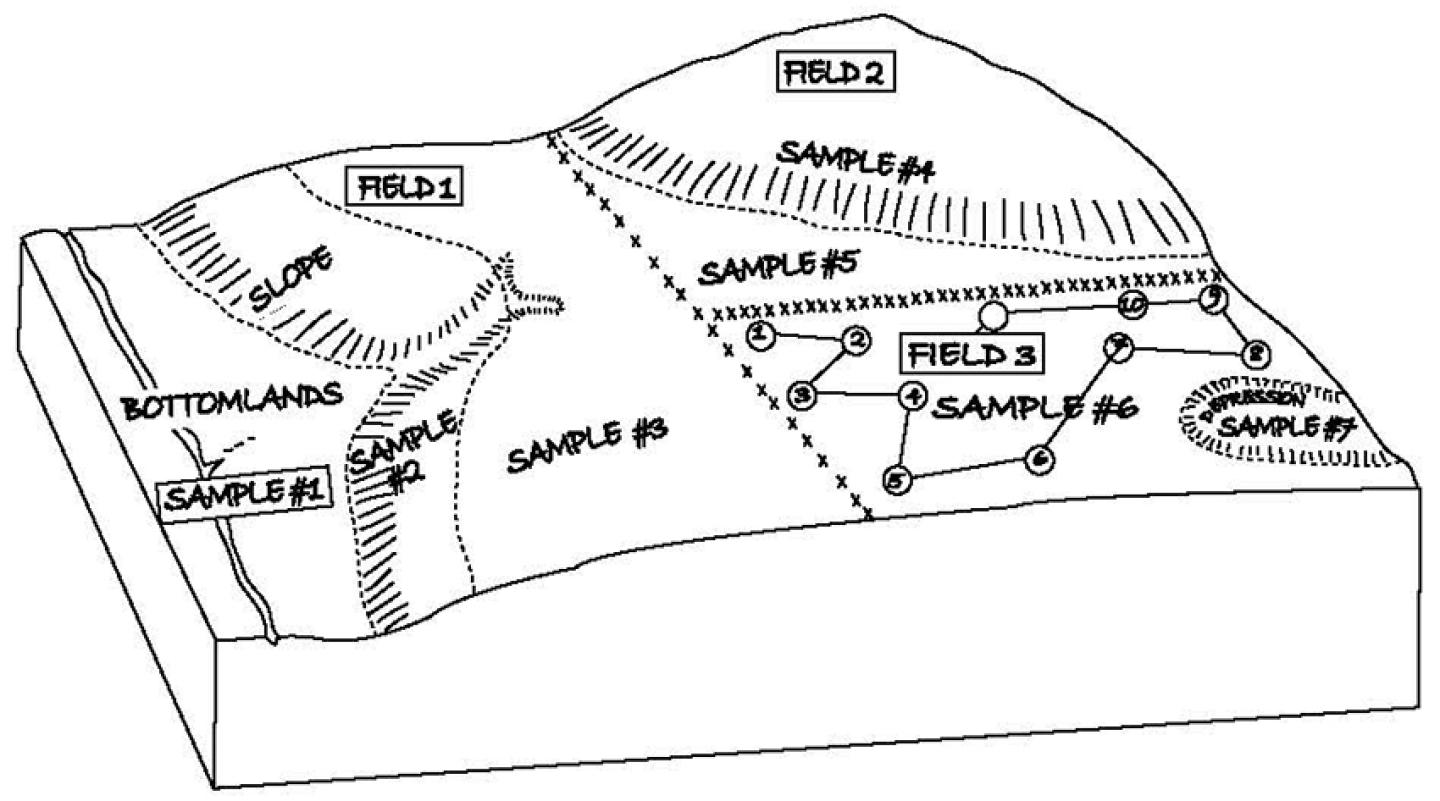Nutrient Management is one of the most important practices for a farm. It affects production costs, crop yield and quality, and water and soil contamination if used incorrectly. To safely and correctly use nutrients on a farm, farmers should have and implement a Nutrient Management Plan.
The first step to create a Nutrient Management Plan is to contact your certified crop professional - a Soil Conservationist, Extension Agent, Licensed Agronomist or any agriculture professional that has been correctly trained in plant nutrition and soil fertility. This professional will give you technical assistance to delineate the fields on your farm to collect soil samples based on soil series, soil slope and field management history. For details, download our Nutrient Management Practice Specification.

After the farm is divided into different fields, the next step is to collect the soil samples. For most crops, the soil sample is taken at an 8-inch depth. from 10 -20 soil subsamples are taken from each identified fields are mix in a bucket to have a composite soil sample that is representative of the Field conditions. After the sample is prepared it should be packaged following Land Grant recommendations and laboratory guidance.
If the soil sample is to be shipped off-island to mainland USA laboratories, it is important that it is in compliance with APHIS requirements. The laboratory should provide a copy of the APHIS permit form for soil samples. You should fill out the permit and, In most cases, pack the soil sample using a double bag to prevent possible soil particles from escaping through the package.
When you receive the soil analysis contact your local agriculture professional to help you with a soil analysis interpretation and determine if you have nutrient sufficiency or insufficiency in your crop production systems.
After all these steps, NRCS and your local agriculture professional will help you develop a Nutrient Management plan to apply the necessary nutrients required by the crop to produce the expected yield, and plan the required conservation practices to address any resource concerns. The required amount of nutrients for different crops have been studied and determined by the Land Grant University of Puerto Rico and the USVI. When applying nutrients, it is important to follow the principles of the 4R’s - Right source, Right rate, Right time, Right place.

